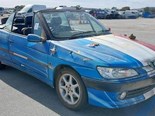Pontiac Parisienne 1963-1970 - Buyer's Guide

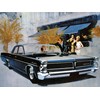

|
The Parisienne was the flashest toy to grace Holden showrooms in the 1960s
The Pontiac brand flourished locally until the early 1950s, when imports were restricted by Government bans on any purchase that sapped scarce foreign exchange reserves. Exemptions were made for British Empire countries, so US-styled cars arrived here in crates from Canadian factories.
Despite their Canadian model names, Holden-assembled Pontiacs were hybrids, with a Chevrolet chassis and mechanical components topped by Pontiac sheet metal. Upgraded interior trim and extra brightwork were there to justify the brand’s higher prices.

Local Pontiacs were painted in the same colour combinations as Holdens and ran alongside them on GM-H assembly lines. Once Holden adopted metallic finishes for its Premier, the range of Pontiac paint choices increased as well.
Cars sold prior to 1964 were often seen in two-tone combinations of greens, blues, red or maroon with a white roof. Black was popular with many going to Government fleets or were used as hire or funeral cars.
| Buyer's Guide: Pontiac Luxury (1959-1969)
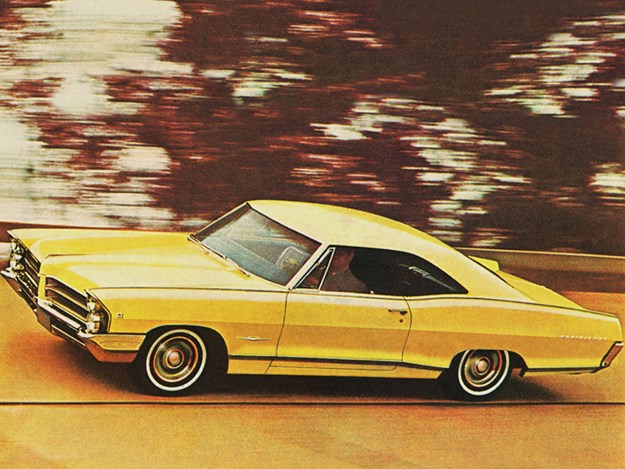
Billed as ‘luxury’ models, local Pontiacs initially had leather seats, carpet and a heater/demister. Pretty much everything else including the radio cost extra. By the mid-1960s power steering was added and air-conditioning was a very expensive accessory.
For 1965 the conservative Parisienne line was enlivened by the addition of a pillarless four-door Sport Hardtop, joining the few special-order pillarless cars imported by dealers for prominent customers.
| Reader Ride: 1967 Pontiac Parisienne
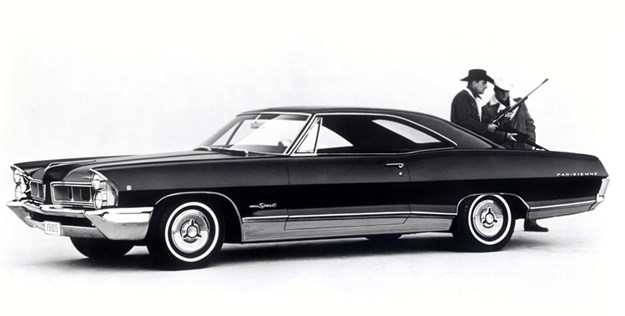
These cars used vertically-stacked headlights introduced as part of a 1963 restyle and, from 1965, the body featured a pronounced ‘Coke-bottle hip’ that gave General Motors cars their distinctive profile.
1965 models were the first Australian Pontiacs to use 171kW versions of the 327 cubic-inch Chevrolet engine and finally delivered performance to match the 6.5-litre Ford Galaxies that were also being assembled in Australia.
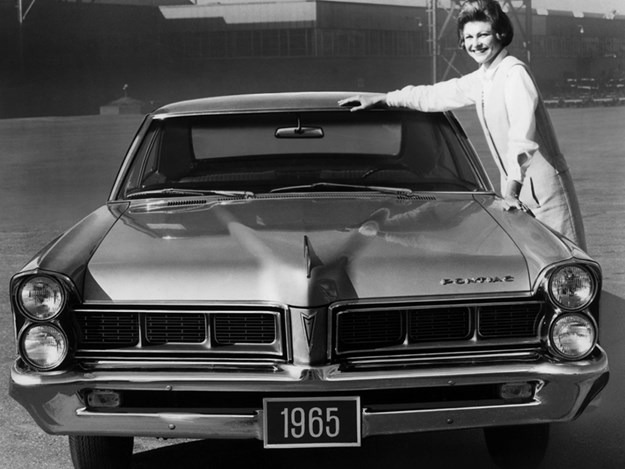
Pontiac styling for 1967 shifted dramatically to the pronounced ‘beak’ emphasising the length of its cars. In North America it followed Buick’s lead of hidden headlights on some models, but Australian cars, until 1968 had stacked lights. The final series of 1968-69 Parisiennes had grille-mounted lights flanking an even more extreme nose extension.
With the introduction of a long-wheelbase Statesman just 18 months away, GM-H saw no reason to continue building the US-designed cars, so in late 1969 the Parisienne and companion Chevrolet Impala discontinued.

People who bought a full-sized Pontiac during the 1960s never did so to be inconspicuous, the smallest measured 5.4 metres in length and a massive 1.98 metres from side to side. The broad bench seats were legal for three occupants but large enough to accommodate four moderate-sized adults, with space in the boot for each to bring a suitcase.
Pre-1965 cars with 4.6-litre engines and two-speed Powerglide transmissions were underpowered and performance wasn’t a forte. The 1963 Parisienne sedan claimed 145kW and over 13 seconds to hit 100km/h, but by 1967 its successor with 5.3-litres, and in spite of increased weight, trimmed that time by three seconds.
Value Range: Pontiac (1965-69 Hardtop)
Fair: $16,500
Good: $28,000
Excellent: $40,000
(Note: exceptional cars will demand more)
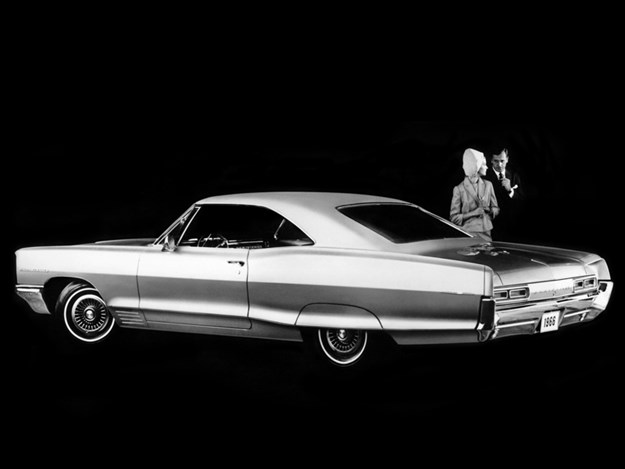
BUYER'S CHECKLIST
Body & chassis
A solid chassis helps protect older Pontiacs from catastrophic rust but the frame still needs to be checked for weakness around body and suspension locating points and chassis outriggers. Also look at the windscreen surround, turret edges, boot and internal floor pans. Missing bumpers or peeling chrome will be expensive to replace or rectify and while US suppliers have bars that should fit local models, careful checking is wise to ensure you don’t pay costly freight for incorrect parts. Even in the USA, parts that were once relatively common have become expensive, including rust-free doors at $600 each and $1400 for later model bumpers.
Engine & transmission
Everything beneath the bonnet of a 1960s Pontiac will be very easy to acquire. The engines are under-stressed and only high mileage or serious neglect will cause major problems. After a test drive listen for hissing or bubbling from the radiator. Oil leaks from the top section of the engine usually aren’t expensive to rectify but be wary of drips from beneath the engine which could be a main bearing seal. Stuttering and backfiring could be a timing issue or a carburettor problem. The Powerglide transmission is old-fashioned but should shift smoothly and, at speeds below 80km/h, accept a manual downshift to Low gear without shuddering.
Suspension & brakes
Brakes are a real problem with these large, heavy cars. In good condition, the all-drum system with power assistance will pull the car up quickly and with minimal pedal pressure. Pressing on the pedal for 30 seconds while the engine is running will reveal problems as the pedal slowly sinks. Listen when the brakes are lightly applied for scraping sounds that can signify binding shoes, out-of-round drums or warped front discs. 1960s RHD cars sold through Holden dealers used new parts and came with a warranty, however, private imports can display dodgy engineering. Play in the steering, twitching when the wheel is on full lock, creaks and thumps from the front end denote a car that needs professional inspection.
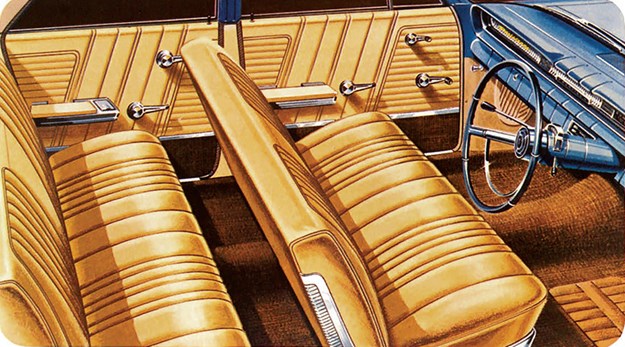
Interior & electrics
Early Australian cars came with leather trim then switched to brushed nylon. Returning either to original condition will be costly, with old-style leather hard to match and fabrics needing to be found overseas. The interior electrics and other controls have little that can fail but check particularly that the heater/demister controls aren’t seized. Cars with power windows and air-con are rare but suffer age-related faults that involve significant costs. Some auto electricians simply will not work on older cars.
1963 - 1970 Pontiac Parisienne specs
NUMBER BUILT: 8000 (approx. total Aust. sales)
BODY: All steel with separate body and chassis four-door sedan and pillarless hardtop
ENGINE: 4638cc or 5354cc V8 with overhead valves and single carburettor (Australia)
POWER & TORQUE: 171kW @ 4400rpm, 445Nm @ 2800rpm
(Aust. 5.3-litre)
PERFORMANCE: 0-96km/h 9.9 seconds, 0-400 metres 17.5 seconds (Aust. 5.3-litre)
TRANSMISSION: Two or three-speed automatic
SUSPENSION: Independent with wishbones, coil springs and shock absorbers (f) live axle with semi-elliptic or coil springs and shock absorbers (r)
BRAKES: Drum or disc (f) drum (r) with power assistance
TYRES: 7.50-14 cross-ply
From Unique Cars #473, Dec 2022/Jan 2023
Unique Cars magazine Value Guides
Sell your car for free right here
Get your monthly fix of news, reviews and stories on the greatest cars and minds in the automotive world.
Subscribe

.jpg)









.jpg)

